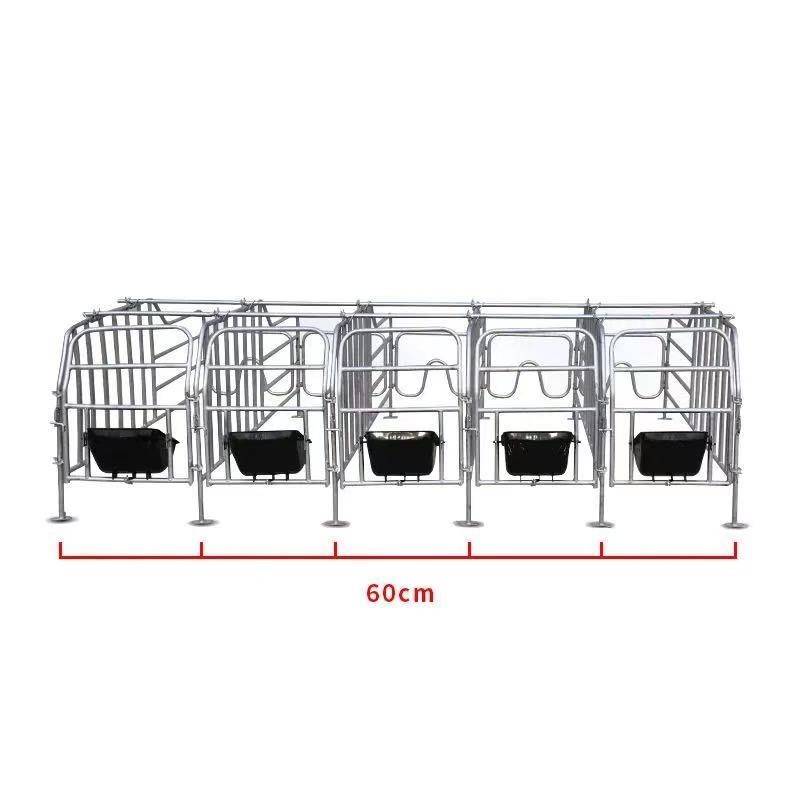Innovative Techniques for Improving Broiler Chicken Welfare in Cage Farming Systems
Jul . 25, 2024 05:09 Back to list
Innovative Techniques for Improving Broiler Chicken Welfare in Cage Farming Systems
The Broiler Cage A Critical Examination of Poultry Farming Practices
In today's world, the demand for chicken meat has seen an unprecedented increase. As a result, poultry farming has evolved rapidly to meet consumer needs. Among the various methods employed, the use of broiler cages has become a significant practice. However, this method of raising poultry has garnered attention and controversy for its impact on animal welfare, environmental sustainability, and food production efficiency.
Broiler cages are designed to maximize space efficiency and increase production rates. Typically, these cages house multiple chickens in confined quarters, promoting rapid growth and efficient feed conversion. Farmers often favor this system, as it allows for streamlined operations and the ability to meet the high market demand for broiler meat. Reports indicate that broilers in cages can attain market weight in as little as six weeks, significantly reducing the time and resources spent for raising the birds compared to traditional farming methods.
However, the intensive nature of broiler caging has raised serious ethical concerns. Critics argue that confining chickens in cramped spaces restricts their natural behaviors, leading to physical ailments and psychological distress. Chickens are social animals that require space to move, extend their wings, and engage in natural behaviors such as pecking the ground and dust bathing. In a caged environment, these opportunities are drastically limited, leading to issues such as feather pecking, aggression, and other stress-induced behaviors.
broiler cage

Moreover, the health implications for both the birds and consumers cannot be overlooked. The crowded conditions in broiler cages can lead to the rapid spread of diseases among the poultry population. Farmers often resort to preventive antibiotics to manage health issues, raising concerns about antibiotic resistance that can affect human health. Furthermore, studies have shown that the nutritional quality of meat can be compromised in systems where animal welfare is not prioritized.
From an environmental perspective, the broiler cage system presents both challenges and opportunities. On one hand, the high density of birds in cages minimizes land use and optimizes feed efficiency, potentially lowering the carbon footprint per unit of meat produced. However, the accumulation of waste in intensive poultry operations poses significant environmental risks. Manure management is a critical aspect of broiler farming, and improper handling can lead to water contamination and greenhouse gas emissions.
In light of these challenges, several alternatives to traditional broiler cages are gaining traction. Free-range and organic farming practices have emerged as viable solutions. These methods offer birds more space, access to the outdoors, and opportunities for natural behaviors, aligning more closely with animal welfare standards. While these systems may result in higher production costs and potentially higher prices for consumers, they are seen as a step toward more ethical and sustainable poultry farming.
In conclusion, the use of broiler cages serves as a stark reminder of the complexities involved in modern poultry farming. While the cages effectively address the needs of a growing population seeking affordable protein sources, they also raise significant concerns regarding animal welfare, health risks, and environmental sustainability. As consumers become increasingly conscious of the origins of their food, the poultry industry must adapt to meet both ethical expectations and market demands. A shift towards more humane practices that prioritize the well-being of animals and the environment will not only benefit the chickens but also foster a more sustainable food system for future generations.
-
Hot Sale 24 & 18 Door Rabbit Cages - Premium Breeding Solutions
NewsJul.25,2025
-
Automatic Feeding Line System Pan Feeder Nipple Drinker - Anping County Yize Metal Products Co., Ltd.
NewsJul.21,2025
-
Automatic Feeding Line System Pan Feeder Nipple Drinker - Anping County Yize Metal Products Co., Ltd.
NewsJul.21,2025
-
Automatic Feeding Line System - Anping Yize | Precision & Nipple
NewsJul.21,2025
-
Automatic Feeding Line System - Anping Yize | Precision & Nipple
NewsJul.21,2025
-
Automatic Feeding Line System-Anping County Yize Metal Products Co., Ltd.|Efficient Feed Distribution&Customized Animal Farming Solutions
NewsJul.21,2025






